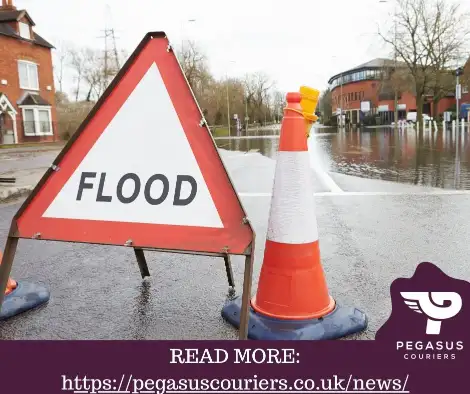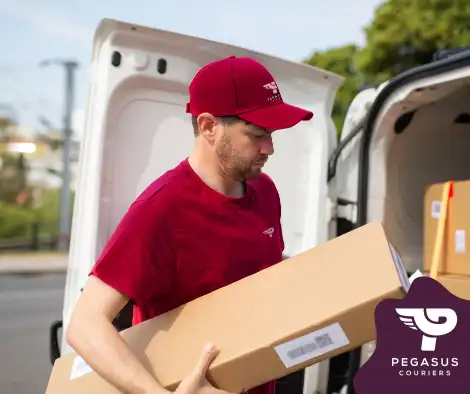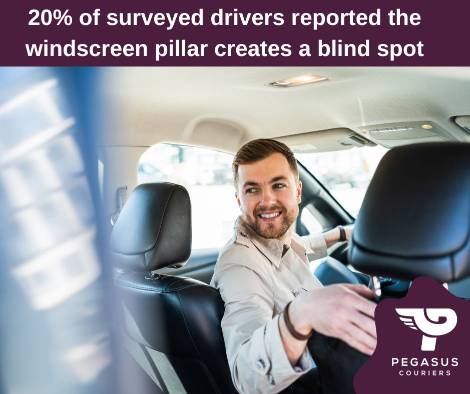What is the Best Van for Delivery Drivers: A Guide What Is The Best Courier Van? Are you a courier driver...
More HereWeather Delays:
Bad Weather Affects Transportation and Delivery

Ever order something online and then worry about the weather messing with delivery? We feel you!
Bad weather can be a real pain for you and the delivery folks.
Here, we discuss three valuable tips to avoid delivery delays. These tips will help you understand weather-related conditions such as snow, storms, and floods and how they could delay your parcel.
In the courier and logistics industry, we always watch the weather, including forecasts. To ensure excellent customer satisfaction, we must ensure our clients know about possible weather-related delays.
Three key weather-related factors:
Navigating weather delays in the courier and package delivery game requires effective communication, strategic planning, and strong partnerships.
These three tips can help overcome weather-related obstacles and provide customers with a smooth and reliable delivery experience.
At Pegasus Couriers, we try to stay proactive and adapt to weather conditions to ensure successful parcel delivery, rain or shine.
Here is how we do it:
Talk it out: Communicating With Customers.
To effectively manage customer expectations and build trust, it’s essential to communicate promptly and transparently about any weather delays in parcel delivery. Customer notifications are crucial in keeping customers informed and aware of potential delays.
Regular delivery updates on delivery status are essential in managing customer expectations and reducing frustration. By keeping customers informed about the status of their parcels, they can plan accordingly and adjust their expectations. Transparent communication about weather-related issues demonstrates a commitment to customer satisfaction and helps build trust.
Offering alternative solutions or options during weather delays shows proactive customer service. Clear and empathetic communication with customers during weather delays is vital for maintaining positive relationships and ensuring customer satisfaction. You can effectively manage expectations and build trust by informing customers and providing solutions. Proactively communicating weather-related delays to customers can help manage expectations and prevent dissatisfaction.
Many logistics companies use social media to inform clients of potential delays and issues. Sign up to your local couriers social media profile to stay updated with the latest ongoings. Here are our social media pages: Facebook, Twitter, Linkedin, Instagram, YouTube, and TikTok.

Be weather-wise: Planning for Weather Conditions.
Monitoring weather conditions in real-time is crucial to effectively plan for weather conditions and ensure efficient and timely parcel delivery. Most people in the UK rely on the government, Weather Met Office.
Weather forecasting tools allow the courier driver and the customer to make informed decisions and adjust delivery schedules accordingly.
Most delivery services and leading courier companies have website portals that allow the client to complete additional details informing the courier driver of possible changes. Failing that, the undelivered parcel is usually stored at the depot pending the next delivery.
It’s also essential to have contingency plans, including alternative routes, to mitigate the impact of weather-related disruptions. At Pegasus Couriers, our route-planning software factors the latest weather trends into the delivery process.
Pick the right team: Partnering With Reliable Couriers.
When choosing a courier – land, sea or air – for your parcel deliveries, you must partner with reliable delivery companies with a proven efficiency track record. This becomes vital if clients in remote areas are constantly impacted by weather. We deliver parcels in the Scottish Highlands, which sometimes has challenging weather conditions for days. Because we are a reputable carrier – recognised across the UK- we have contingency plans for several scenarios to minimise the impact of weather delays on your deliveries.
By selecting a reliable carrier, you can significantly improve the overall delivery experience for your customers. Working with such carriers reduces the risk of delays and increases customer satisfaction.
Avoid delivery disappointment:
By following these tips, you can turn weather delays from a headache into a minor bump in the road. Remember, everyone’s working hard to get your package to you safely, and a little understanding goes a long way! So, next time the weather throws a tantrum, relax, grab a cup of tea, and know your delivery is in good hands.
Are you interested in becoming a courier driver?
Join our team at Pegasus Couriers! We are actively seeking new drivers to be part of our family-owned business. With our comprehensive training, support, and growth opportunities, you can thrive with us. Take the first step towards a successful career by reaching out today! To apply, simply give us a call at 0131 287 1000 or visit our website to submit your application online. Let’s embark on this exciting journey together!
FOLLOW US TO KEEP UP TO DATE:
Blind Spot Safety Tips
Eliminate Blind Spot Worries: Essential Safety Tips for Confident Lane Changes Blind Spot Mirror Checks for Safe Driving: Driver Safety You...
More HereDelivery Delays
Common Causes of Parcel Delivery Delays Are you tired of waiting for your parcel deliveries? It can be frustrating and time-consuming.Here...
More Hereadvantages of self employed
Advantages of Self-Employed Courier Drivers in the UK Are you tired of your monotonous 9-to-5 job and searching for a new...
More Here


